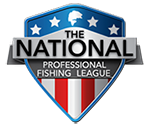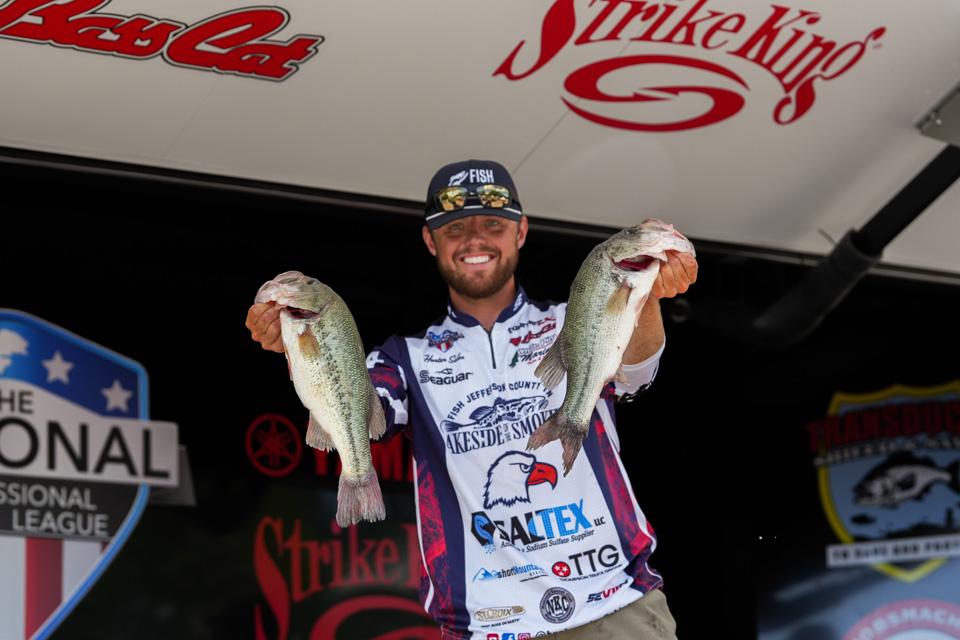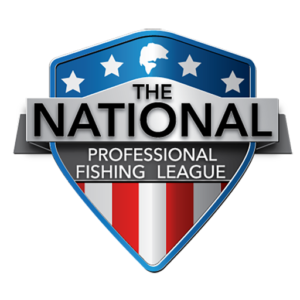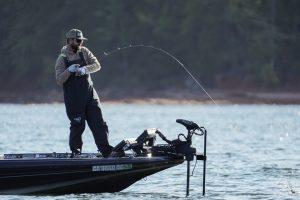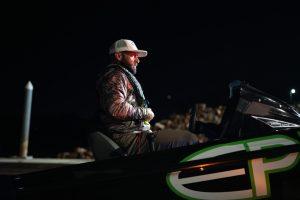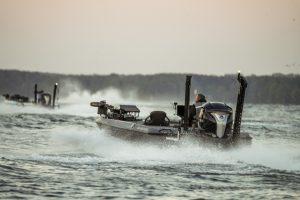Story by Hunter Sales | Photos by Tanner & Travis Lyons
Today, I’m going to give some tips on how to catch more bass during my favorite time of year—summer! The bass are schooled up on nearly every lake across the country, but this article is going to focus on lakes that have significant current flow. Most people know that the bass get out deep in the summer, but few have the confidence to find and target them. This is hands down my favorite way to fish and this article should help you see why.
Before we dive into where to look and what baits to throw, we must first take a moment to discuss what we mean by “ledge fishing.” This term is essentially a generalization of fishing offshore in the summertime. Usually, the best summertime schools will be in an area that the current hits directly. These same areas usually have some type of depth change and hard bottom. On Douglas, it might be a 20-foot change in depth, while on TVA Lakes it could be something as subtle as a 2-foot rise on a bar. The bass like these depth changes because they create feeding areas for them as current pushes bait directly onto these hard-bottom areas.
The most important element to successful ledge fishing is finding the schools of fish. Sometimes you can look at your mapping and predict where they will be located—obvious areas such as a river channel split or creek channel mouth. These areas usually hold the biggest schools of fish but they’re often the most educated fish as well. My favorite type of places to find are areas that get overlooked by other anglers. I will often spend my summer days idling creek channel bends, main lake flats, or long points on Douglas Lake to try to find one of these sneaky spots by side-scanning with my Humminbird Xplore units.
My best advice is to visualize current rolling down the lake much like it would in a trout stream. Those outside bends where a singular boulder will break the current and house multiple trout are the same types of conditions that play home to large schools of bass, you just can’t see the current breaks with your eyes most of the time. The areas that are hit the hardest by current will often have the hardest bottom and house the biggest bass.
Once you’ve located a school of fish, you must be able to set up and cast to the fish efficiently. I’m a huge believer in bringing the bait down-current naturally to get the most bites. Oftentimes, this is also how you fish a place without getting hung-up due to the natural contour of the bottom. If you have LiveScope, setting up on these offshore fish is much easier, as you can see the bass and your bait in real-time. If not, it’s critical to have your units ethernet-connected so that they will share waypoints. It’s also important to utilize a heading sensor so that you are constantly aware of which way the nose of your boat is pointing. This helps to make sure the fish are seeing your bait on each cast.
Finally, let’s cover the rotation of baits I rely on. The order that you throw these baits is extremely important, as some of the later baits in my rotation tend to bust-up the school. I always start with some type of single-hook bait. A scrounger-style bait, football jig, hair jig, or hollow-body swimbait often gets the call for me. Oftentimes, I will make one cast with each of these baits to see if I can get the school to fire. If not, my next approach is a finesse bait such as a drop-shot, Neko-rig, or minnow style bait. If you can get one fish to bite, you can usually incite a flurry of multiple bites in a row.
If I can’t get the school to fire on these finesse baits, I will go to a crankbait and attempt to illicit a reaction strike. An aggressive bait such as a crankbait will also typically draw the largest fish to bite. The final bait that I throw before I leave a school is always a flutter spoon. The fish are often scattered by now, and there is no better bait to prompt a reaction strike from a large fish than a big spoon.
That’s my intro-class on offshore summertime ledge-fishing. If you’ll give these tips a try, you can have some of your most productive fishing days of the whole year this summer.
Hunter Sales – Angler Profile
